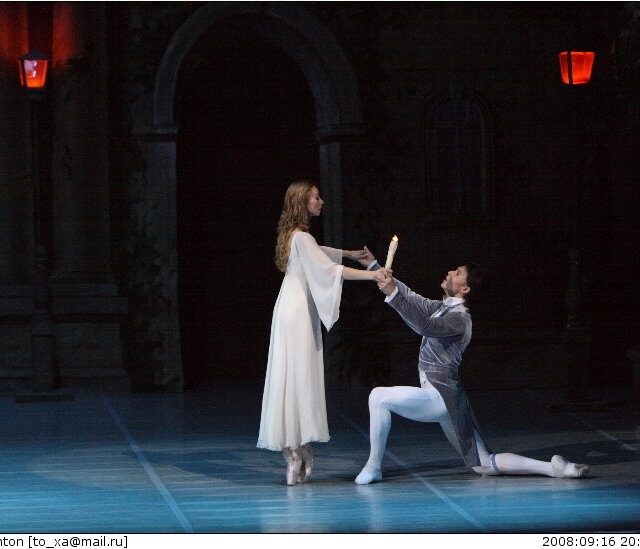
La Sonnambula

One-act ballet using musical themes from Vincenzo Bellini’s operas
The ballet was first staged in 1946. This version was first performed in Perm in 2001.
The main enigma of this romantic ballet–melodrama is how the fragile ballerina, who plays the role ofLa Sonnambula, manages to lift the dead Poet and hide with his body in the night-time shadow of an arch. The great ballet master George Balanchine created this rare example (for him) of a ballet with a plot for the Ballets Russes de Monte Carlo in 1946. The music was written by Italian composer Vittorio Rieti, who used themes from Bellini’s operas.
Among the characters at a ball, whose faces are concealed by black half-masks, a new guest appears: a Poet, who is instantly captivated by the beauty of a Coquette, the favourite of the Baron hosting the ball.
However, the Poet’s happiness is short-lived, as after the ball, the Baron takes the girl away with him, leaving her lover in solitude. At that very minute a girl with closed eyes holding a burning candle appears in the ruined park…
Balanchine’s ballet harks back to two of the earliest ballets in history — La Sylphide and Giselle — and the part of La Sonnambula is one of the most difficult in the repertoire. The original title of the ballet was Night Shadow; it was only in 1960 at the New York City Ballet that it came to be known as La Sonnambula.
The ballet is staged in collaboration with the George Balanchine Foundation in accordance with Balanchine’s style and technique
















